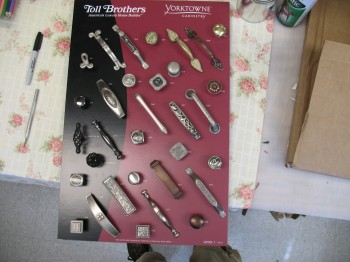As in real estate, the three most important aspects of storing substrates, whether they’re roll or rigid media and materials, are location, location, location.

Materials should be isolated from changing temperature and humidity as much as possible. The best way to do this is to store substrates in a climate-controlled area. Variations in temperature and humidity will cause materials to expand and contract, making them susceptible to failure at the most inconvenient times, like after you’ve delivered a large job to the customer.
Plastic/PVC board materials are especially vulnerable to temperature fluctuations. Wood- and foam-based boards are most vulnerable to changes in humidity. With either type of substrate the key is to strike an environmental balance.
Moreover, if you don’t have to inventory a lot of substrates for an extended time period, don’t. Most manufacturers can ship what you need quickly on an as-needed basis.
Stack rigid board materials horizontally so that less air circulates between them, and support them evenly underneath. Very often, a pallet of board is unloaded with a fork lift and supported only on the ends with 2x4s. Put a 2×4 or a piece of plywood in the middle, or use a pallet so the board doesn’t warp in the middle. Once that bottom board bows out, the rest are sure to follow. If you have to stack them vertically, pack them together tightly.
Because roll media is susceptible to the same ravages of temperature and humidity, you should follow the same basic guidelines. Plus, unused media should be wrapped back up in the plastic in which it was delivered.
For media that’s designed for aqueous-based printing, it’s especially important to keep out water and humidity. The primary job of an inkjet coating is to absorb water. The more humidity it absorbs before printing diminishes its ability to accept moderate or heavy ink saturation.
Humidity fluctuations and exposure to the air will also affect adhesives. Especially low humidity will tend to dry out the adhesive. Too much air exposure will cause the adhesive to cure prematurely. Once again, the ideal is a climate-controlled storage area, plus bagging the media after every use.
Unlike board materials, vinyl rolls should be stacked vertically. If vinyl rolls are stacked horizontally on top of each other, the pressure can cause plasticizer migration, which will result in lines across the width of the material as you print.
Try to combine like materials together, such as a vinyl substrate with a vinyl laminate, so that they expand and contract in the same basic pattern. This is not as crucial for short-term applications of a month or less, but longer-term applications require closer attention to material compatibilities.
For instance, if you use a monomeric, economy vinyl with a foam board, the laminate will tend to come off the board rather quickly since a monomeric vinyl contracts in one direction, causing edge creep and delamination, particularly as the board begins taking on water and expanding and contracting with temperature fluctuations. An intermediate, polymeric vinyl laminate, on the other hand, expands and contracts in many directions, allowing it to “keep up” with the substrate underneath, extending the life of the graphic.



